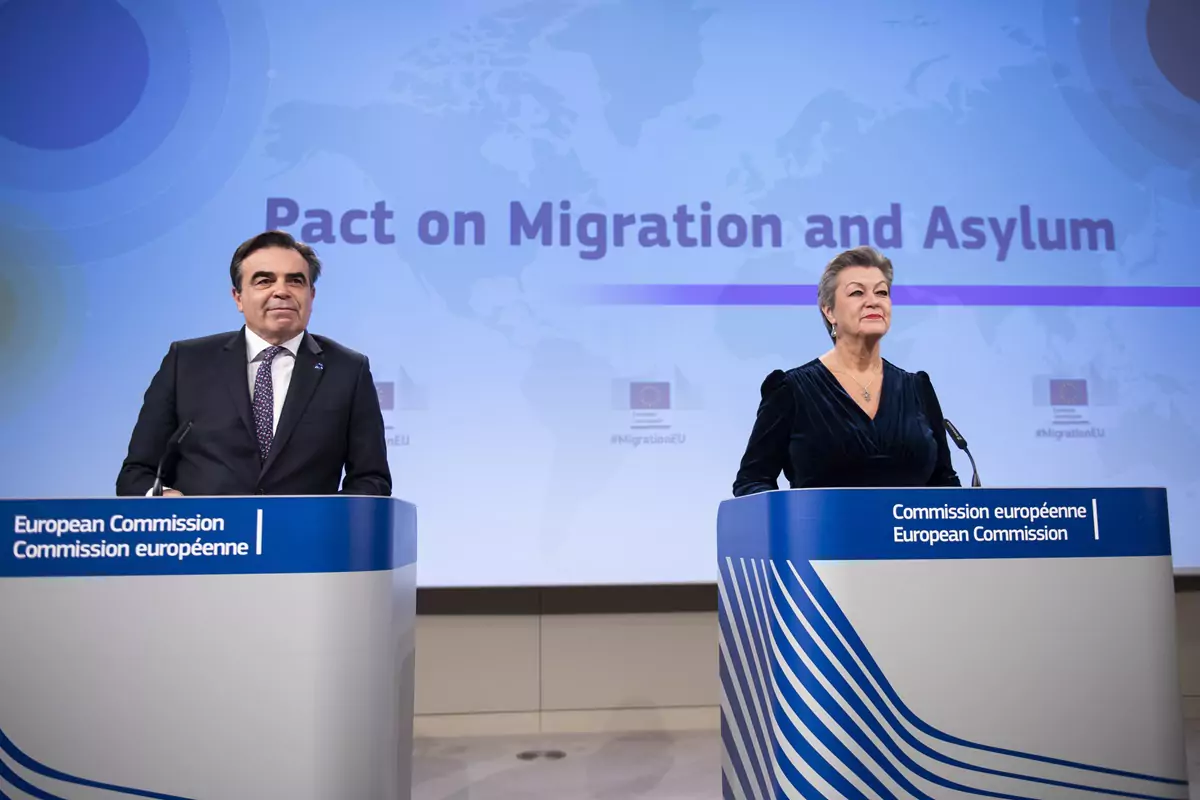While France has been busy with its own controversial new law on immigration, the EU has been working on the Pact on Migration and Asylum to better “manage migration”. Here’s what it entails.
The discussion on how to best manage the arrival, hosting, integration and, in some cases, deportation of migrants in the European Union has gone on for time immemorial.
Now, European Commission President Ursula von der Leyen has announced a “major breakthrough” in policy with the unveiling of a new Pact on Migration and Asylum, which she says is “a crucial step in making sure that Europe has the tools to manage migration”.
See more: France: Far right claims controversial new immigration law as an “ideological victory”
The contents of the Pact were revealed on 20th December, and there are five key elements: uniform screening regulations for non-EU nationals upon arrival; the development of a common database to better track unauthorised movements; a system to make asylum, return and border procedures faster and more effective; fairer ways of dispersing and managing newcomers to take the burden off the countries who are the most common points of entry; and stronger crisis management plans to face future situations.
“Europe is a strong community and capable of finding great answers to great challenges,” said von der Leyen. “I welcome the timely political agreement reached by Parliament and Council on the key elements of the new Pact on Migration and Asylum. Our goal was to find a fair and pragmatic approach to managing migration together in the EU.”
CHALLENGES
The Pact is drawing a certain amount of criticism from some quarters, with groups like Amnesty International saying it “will set back European asylum law for decades” and that its “likely outcome is a surge in suffering on every step of a person’s journey to seek asylum in the EU”.
Since the start of 2023, an estimated 225,000 migrants have arrived in Europe. More than half of those have come via a dangerous Mediterranean crossing from North Africa. Italy, Greece, and Malta have recorded the majority of the arrivals, and their governments are frequently cited as being overwhelmed by the situation.
Previous attempts to share responsibility for migrant populations have not been successful, as some EU countries were unwilling to take people in. This new plan is meant to change that with a move away from an ad-hoc approach to one that makes for “long-term and sustainable solutions” .
“Today’s historical agreement is a proud testament to the fact that Europe can deliver solutions on the issues that matter most to citizens,” said Margaritis Schinas, Vice-President for Promoting our European Way of Life, of the plans. “The Pact is a series of sensible and indispensable measures to manage migration in a predictable and more effective manner. All of these measures will reduce pressure on the EU and prevent loss of life.”
“We need to manage migration in an orderly way, and we have to do that in a European way,” added Ylva Johansson, Commissioner for Home Affairs. “It’s not about winners and losers. By agreeing on a common approach to managing migration in a humane way together, we will all be winners.”
Once formally ratified, the scheme could come into force in 2024.
Join the Monaco Life community – the largest English media in the Principality.
Sign up for the Monaco Life newsletter, and follow us on Facebook, Instagram, LinkedIn and Tik Tok.
Photo credit: Lukasz Kobus / European Union
